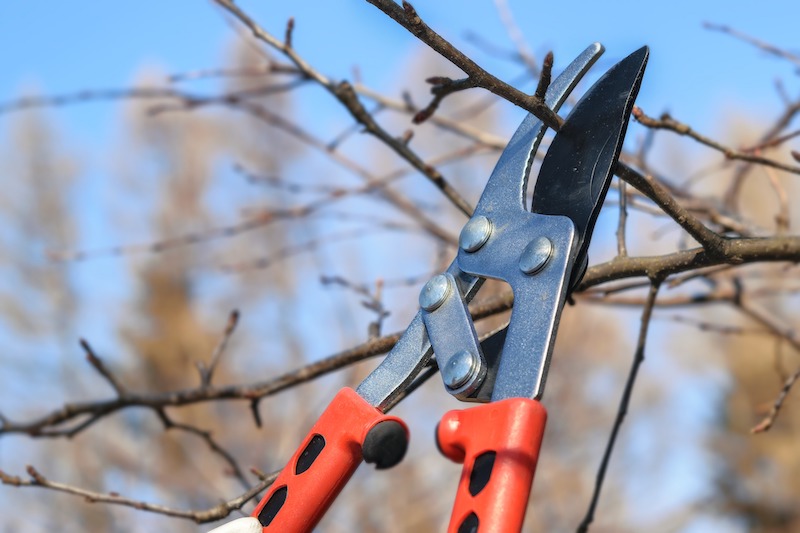Pruning a tree encourages good health, provides a more beautiful appearance, and prevents limb breakage. In the case of maple, a few trimming sessions will benefit it and you. Unless you are a Bonsai buff, you don’t need to worry about spending a lot of time fussing over your maple; most sessions will be maintenance pruning and not require much effort.

When to Prune Maple
Prune young maples, three years old or less, lightly for shape. Prune mature trees to remove falling or low-hanging branches, crossing branches, and branches blocking the interior of the canopy. The best times to prune maple trees are in midwinter and midsummer. In the winter, maple is dormant, and structural cuts are easier to choose and make when the branches are bare. During the summer, as long as the heat is not excessive, the tree is in full foliage, and pruning can be done to improve its overall shape.
In the case of disease or pest infestation, light pruning may be needed whenever these issues arise. Avoid pruning, however, when the tree is budding or blooming, during late spring and early summer. During these two periods, there is a greater risk of losing sap.
Why Prune Maple
Since hardy, low-maintenance ornamentals such as maple trees are known for their lovely natural forms, why prune? Young trees occasionally need a little help during the first two or three years to get them growing in the right direction. A little light trimming for shape can give a young tree an excellent frame to start with as they mature. After they mature, the three primary reasons to prune are to open up the canopy, remove crossing and dead branches, and improve air circulation.
Make sure you select a suitable species of maple for the location before planting. Do plenty of research before you decide what type of maple to plant. Pruning for crown reduction can be a lot of work and if done incorrectly, can adversely affect maple’s health.

How to Prune Maple
Step 1 - Gather pruning tools.
Gather pruning shears, loppers, hand saw, and pole pruner. Use shears to cut branches up to ¾ inches thick; loppers for branches up to 2.0 inches thick, saw for branches 1 inch to 5 inches thick; and a pole pruner for branches up to 1.25 inches thick and hard to reach.
Step 2 - Clean all of the tools with rubbing alcohol prior to pruning.
Step 3 - Use 3-cut pruning method.
With branches larger than 1.25 inches, use the 3-cut pruning method. Depending on the branch's weight, if you only make a single cut near the collar, the branch's weight may pull the limb down, ripping a large portion of the bark. This removal of the bark may threaten the tree's health. So, using loppers or a saw, make a cut in an upward direction about 10 to 12 inches away from the trunk. This is a partial cut. Now, if the branch's weight should bring the limb down, it will simply fold downwards upon itself and not rip the bark. Second, make a downward cut farther out from the first, removing most of the branch's heavy weight. Lastly, make a final cut perpendicular to the tree's trunk just outside the tree's collar on the branch's side. Be careful not to remove any of the tree's collar because doing so may threaten the tree's health.
Step 4 - Remove dead, diseased, and damaged limbs from a mature maple.
Step 5 - Prune crossed and crowded limbs from the interior with not enough room to grow. Doing so improves aeration, access to sunlight, and shape.
Step 6 - Prune suckers immediately. Thin water spouts. Both suckers and waterspouts indicate tree stress. Determine what’s causing the stress and treat the problem to prevent additional suckers and water spouts.
Step 7 - Remove lower branches to improve shape; encourage a taller crown, and/or to remove safety hazards for people walking underneath its limbs.
Maple Pruning Tips
- Prune maple trees in winter or mid-summer.
- Prune maple to support its health; improve its shape; and to remove safety hazards.
- Use pruning shears, loppers, hand saw, and pole pruner cleaned with alcohol to trim maple.
- Use the 3-cut pruning method to remove maple branches larger than 1.25 inches.
 |
Author Suellen Barnes - Published 4-27-2023 |
